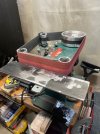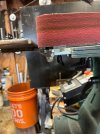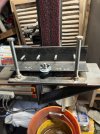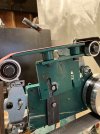carnifex knifeworks
Gold Member
- Joined
- Dec 11, 2022
- Messages
- 3,136
Where are you finding a replacement arm?I would expect most any 6" or 8" contact wheel would work just fine. Especially if the thicker tooling arm is in use. I just checked and a replacement tooling arm from Grizzly is only $10.70. plus shipping.




